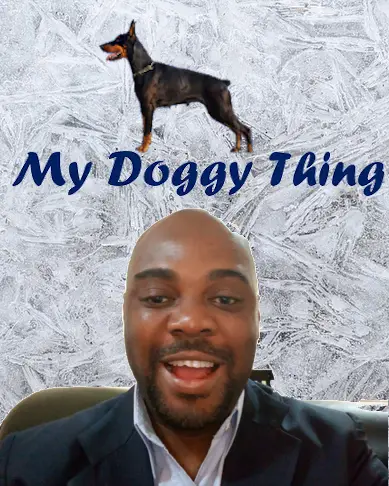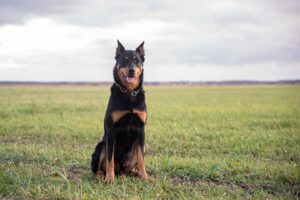WHY IS MY DOG MOVING SLOW?

If your dog has started moving slow and not engaging in activities as he used to before, there is a high probability that it is not due to laziness. Most of the time, there are reasons for your dog acting this way. Some of the reasons you can notice right away, especially if you have a good bond with your dog. The reason why your dog is moving slow can be behavioral, physical stress, or Underlying Health Issues. Now let’s go into each in detail. Why is my dog moving slow?
BEHAVIOURAL ISSUES
Reluctance.
This can best be explained with an example. Imagine that you have been out on a walk with your dog, he or she is walking around, running, and jumping all within your allowed range. You all seem to be having a good time, but as you make the round and start reaching the doors of your home, you find that your dog is walking slowly and not wanting to jump.
You see, your dog walking slowly at this stage is more of an indication that he or she does not want to go into the house. You see, you and your dog going for a walk can be compared to taking a kid to a party or play park, he or she has such a good time, the fun is still on and you suddenly yank them out and take them back home. You will see that the young kid would sulk all through the journey back home. Well, this is exactly how your dog feels and the only way they can express that to you is by moving slow.
Now you can play out this example into various scenarios. Your dog may just be slowing down as a sign to you that he or she does not want to do whatever you are trying to get them to do.
Using the same example as above, you can flip the script on your dog by making them understand that there is still some fun when you enter the house. Entreat them with dog treats or continue your dog play with them. Just like a kid, if he or she is sure that the fun still goes on whether at the party or in the house. They would oblige you no matter the situation.
So, if your dog walks slowly on a leash, it can probably be out of reluctance.
Boredom.
If you are complaining “my dog is very quiet and slow“, then your dog may just be bored and even worse not find a source of stimulation. An average dog would love to spend all his or her life exploring different places. This they would want to do with their modern-day pack and that includes you.
Now, a bored dog displays lots of signs some of which are Chewing, Digging, Over excitement, Excessive licking, Escaping and running away, Pacing, Panting without physical exertion, and Scratching without physical explanation. But as time goes on without them getting any response to their outburst, they would reside themselves to their fate and choose their corner of the house to sulk in.
Fortunately, solving the boredom problem is an easy one to solve. It’s all about engaging your dog in planned activities daily. You do this by:
Providing them with dog toys: Puzzles and Interactive toys can do wonders to cure a dog of boredom, the whole idea is not just to get your dog engaged but for them to be rewarded for their efforts also.
Positive reinforcement training: Encouraging and rewarding your dog for behaviors you approve of and ignoring the ones you do not approve of never goes old with dogs.
Plan a daily schedule of activities with your dog: A dog that understands there is time for everything from feeding to exercising to playing would be more relaxed in the household and less bored.
Engaging in dog sports: Depending on your dog breed and capacity, some dogs need more mental and physical stimulation than others.
Your dog is afraid.
If your dog suspects that something bad or scary awaits them in the area they are going towards, they would certainly go to this area with caution. This caution might be interpreted by those watching your dog as him or her moving slowly. One of the signs that your dog might be scared or cautious about approaching a particular spot is the amount of concentration on their face while doing so.
PHYSICAL STRESS.
Tiredness.
If you see your dog suddenly lethargic and wobbly after exercising, then your dog might just be tired from the activities he or she has been through. Of course, this is under the assumption that the dog is perfectly healthy with no underlying health conditions.
Now having said that a dog that has been exercised hard or for a long period would experience fatigue and sometimes intolerance. Some other things a dog might experience from exercising hard are dehydration, increase heart rate, muscle fatigue, and metabolic imbalance.
It is very important not to over-exercise your dog as it can lead to serious problems and even death, if you suspect your dog moving slowly due to tiredness, give them time to rest and provide water for them to rehydrate.
Old age.
Age does a number on us all and our dogs are no different. Normally, when a dog reaches or exceeds seven years of age, they are considered to be elderly dogs. At this stage of their life, it is normal for them to slow down a bit in their activities. As far as your dog slowing down is not also accompanied by other symptoms that are health-related. This change is normal.
In addition to an older dog moving slow, there is also the possibility of them getting fatter and their senses of sight, taste, sound, and feeling not being in top form as they used to be before. They also become more prone to health problems which we would discuss in a moment.
The best thing you can do for your dog as they grow older is to give them good exercise, love, proper nutrition, and supplements to boost their immune systems and maintain healthy joint conditions. You can learn more about good supplements for your dog here: WHAT IS THE BEST GLUCOSAMINE FOR DOGS?

HEALTH ISSUES
Pain and Injury.
“Why is my dog moving slow and shaking?” Your dog may be in pain from an injury. A damaged ligament, hip, or elbow dysplasia would definitely make your dog move slowly. The problem with these situations is that dogs cannot express themselves the way we do when we are in pain or injured. Moreso, most dogs are stoic in nature, meaning they would rather hide the fact that they are injured or in pain to you than open up.
This is why it is so important that you observe your dog closely. Any small change in their daily routine should be properly investigated. Simple signs like panting, grooming themselves excessively, trembling, or exhibiting a stiff structure should be further investigated so that you can be sure of what exactly is the problem with your dog.
Infection.
Any type of infection can lead to your dog moving slow, below, we would mention the more serious ones that need to be attended to immediately.
Parvovirus: This infection is spread through feces. Dogs infected with this virus display signs such as lethargy, vomiting, diarrhea, and abdominal pain. Dogs with Parvovirus are usually treated using antibiotics and anti-nausea medications. There is also aggressive supportive care with fluids.
Canine Distemper: Symptoms of this infection apart from your dog moving slowly, includes fever, lethargy, discharge from the eyes and nose, and coughing. In some dogs, this infection can lead to a neurological disorder. Symptoms vary from dog to dog. General treatment involves antibiotics, fluids, and anticonvulsants.
Kennel cough: is a highly contagious respiratory infection characterized by fever, slow movement, and dry, honking cough. General treatment includes cough suppressants, antibiotics, and bronchodilators.
Heartworm Infection: as the name infers, this infection is caused by heartworms usually transmitted through mosquito bites. Symptoms of this infection include depression, weakness, slow movement, and fever. General treatment includes injections, medications, and lots of rest.
Organic and Metabolic diseases.
These diseases attack our dog’s organs and disrupt normal processes in their body for example the digestive process. This leads to some malfunctioning organs and incomplete or partially completed metabolic processes. Some examples of these diseases are:
Heart disease: characterized by weakness and a dog’s inability to engage in exercise, other symptoms as the disease advances include loss of appetite, coughing, and rapid breathing. Basic treatment includes diet changes, heart medication, and diuretics.
Diabetes: symptoms include excessive thirst and urination, weight loss, changes in appetite, and slowness in dogs. Basic treatment involves diet adjustments and insulin injections.
Hypoglycemia: also known as low blood sugar is the direct opposite of diabetes. Symptoms include weakness and seizures in dogs. Treatment varies in different dogs depending on the cause of the disease but can involve intravenous glucose or corn syrup.
Liver disease: symptoms include slowness in dogs loss of appetite, jaundice, depression, and abdominal bloating. Basic treatment involves surgery, diet changes, and medication.
Canine cognitive dysfunction
Also known as “doggy dementia“. This is the canine version of “Alzheimer’s disease“. Now to be clear, as dogs get older they naturally slow down and can even be forgetful at times. This cannot be helped, but Canine cognitive dysfunction is a whole other level of forgetfulness and lack of neural coordination for dogs making them move slower and even worse act in manners that are uncoordinated.
Vet doctors have an acronym which they use to list the principal things which are the main pointers that a dog may be suffering from Canine cognitive dysfunction. The acronym is D.I.S.H.A and each letter stands for Disorientation; [altered] Interactions with family members or other pets; Sleep-wake cycle changes; House soiling; and Activity level changes.
Going into more details, the symptoms a dog would exhibit if suffering from this dysfunction are but not limited to confusion in familiar surroundings, anxiety, irritability, disregard for previous training, restlessness at night and/or sleeping all day, house soiling, etc.
Most older dogs would exhibit one or two of these symptoms, but when you notice three or more, then it is likely that your dog is suffering from Canine cognitive dysfunction.
As we said earlier, these are just pointers, a full veterinary checkup is needed to ascertain that the dog is suffering from Canine cognitive dysfunction, but generally, statistics from PetMD states that a dog from eleven years of age has a fifty percent probability of having this disorder and it only goes up higher as they age.
Unfortunately, there is no cure for this dysfunction, you will have to get used to your dog moving slowly if they are diagnosed with this dysfunction, but you can try and assist your dog in this phase of his or her life by providing them with good nutrition, supplements and lots of stimulation.
Check your dog’s supplement, they should contain things like antioxidants, vitamins E and C, selenium, flavonoids, beta carotene, Omega-3, and carnitine all of which can help to boost their cognitive function and interactive toys or puzzles to engage them more.
Normally, it is always better to engage them in some training and exercise sessions because you get to bond with your dog more and they get to feel loved and wanted around you.
Arthritis
This ailment can affect dogs at any stage of their life although it is more prevalent in older dogs. This ailment affects our dogs’ bones and joints. Most of them have a situation where there joints are inflamed forcing them to stay on the sideline instead of having fun outdoors
As we said earlier, this ailment does not only affect older dogs, warning signs of arthritis in any dog includes becoming irritable or hesitant to be touched. Having trouble getting up from a lying position, climbing stairs, or hopping onto the sofa; stiff and painful joints which your dog may lick or chew on at their hips, elbows or wrists.
Because dogs are naturally stoic, your dog would try to hide the fact that he or she may be suffering from arthritis. If you notice one or more of the signs mentioned above, please endeavor to see a vet doctor immediately. Arthritis is an illness that cannot be cured but can be managed. Doing things like giving your dog good nutrition, exercising properly, weight control, and giving them quality supplements would go a long way in making sure your dog still enjoyed his or her life even if he has arthritis.
Cancer.
Cancers are usually abnormal growth of cells or tumors in a particular region of a body. In this case, we are concerned about our dogs. These tumors usually start from inside the dog’s body and spread to other parts of the body. Keep in mind that every dog you see has the potential of getting cancerous cells.
That is why it is very important to contact your vet doctor as soon as possible if you suspect that your dog has cancer. Some of the major symptoms apart from moving slowly is Blood in the urine, Increased thirst, Vomiting, Depression, etc.
Keep in mind that early detection and treatment of cancer is the best bet for your dog to survive. The earlier the issue is dealt with the better for everyone.
Medication.
The medications our dogs take can have the same side effects on them as the ones we as human beings take. Some of these signs include but are not limited to drowsiness, sluggishness, and moving slowly. Antihistamines, anti-seizure drugs, sedatives, anti-anxiety drugs, and many pain meds all have the same effect of making our dogs feel weak and move slowly.
It is not likely that these side effects are going to be deadly to your dog, but in other to be safe you should always contact your vet doctor and explain the situation. It goes without saying. “It’s better to be too careful than to be sorry”
So there you have it. If you have been asking yourself “Why is my dog moving slow?”, saying to yourself “my dog is walking slowly with head down” or “my dog is lethargic and walking slowly” Well, we believe we have dealt with all major possibilities why he is doing so.
Good luck to you.
DOG CARE
DOG PRODUCTS
DOG BREEDS

Hi, I am Charles Nwankwo Editor-in-Chief, Mydoggything.com. Gleaning from Professional Dog Trainers, behaviorist, Registered Veterinarians, and Breeders. We are passionate about making dog care easy for you. My job is to make sure that you get the best-updated dog care information to understand and take care of your dog or dogs.









